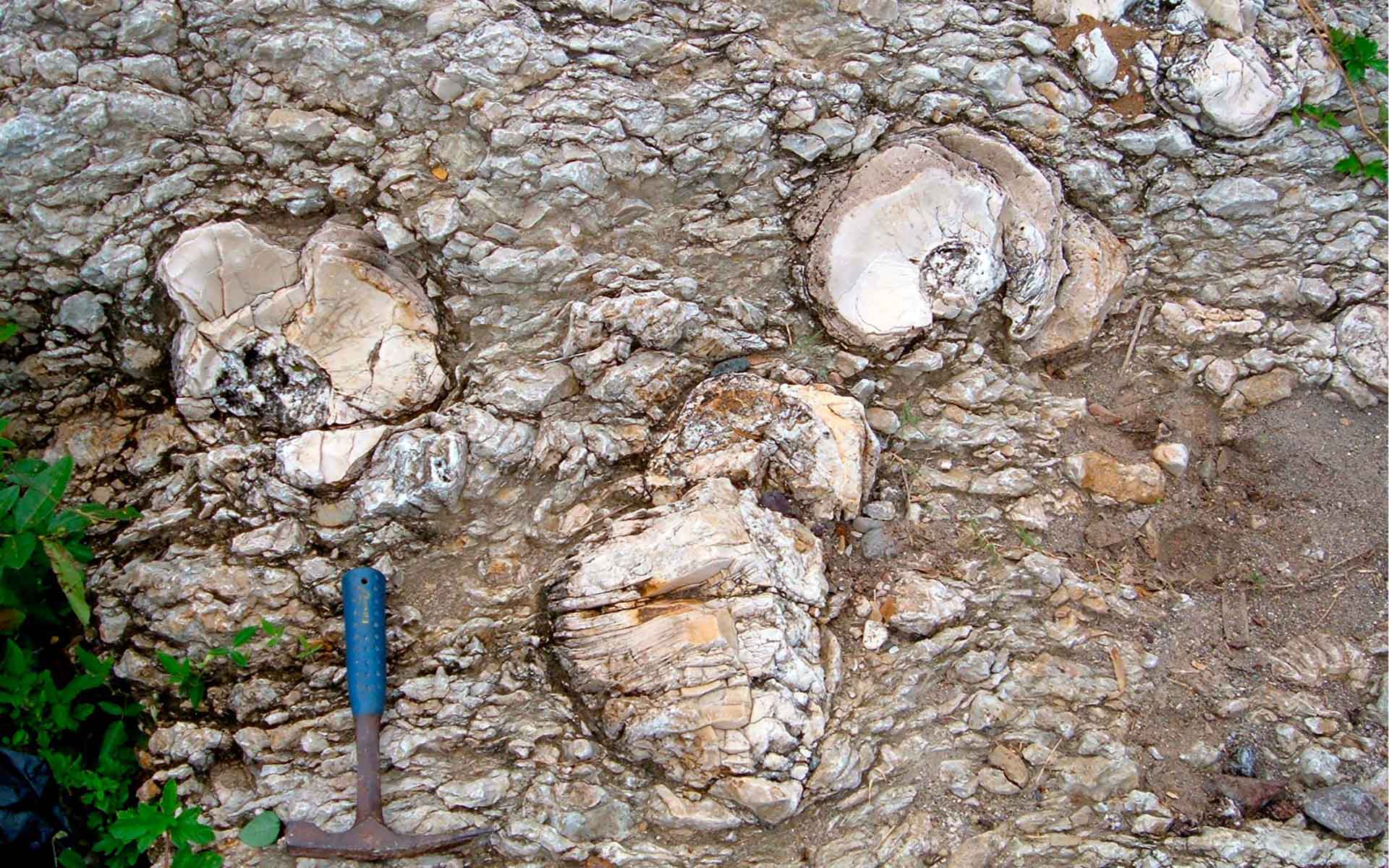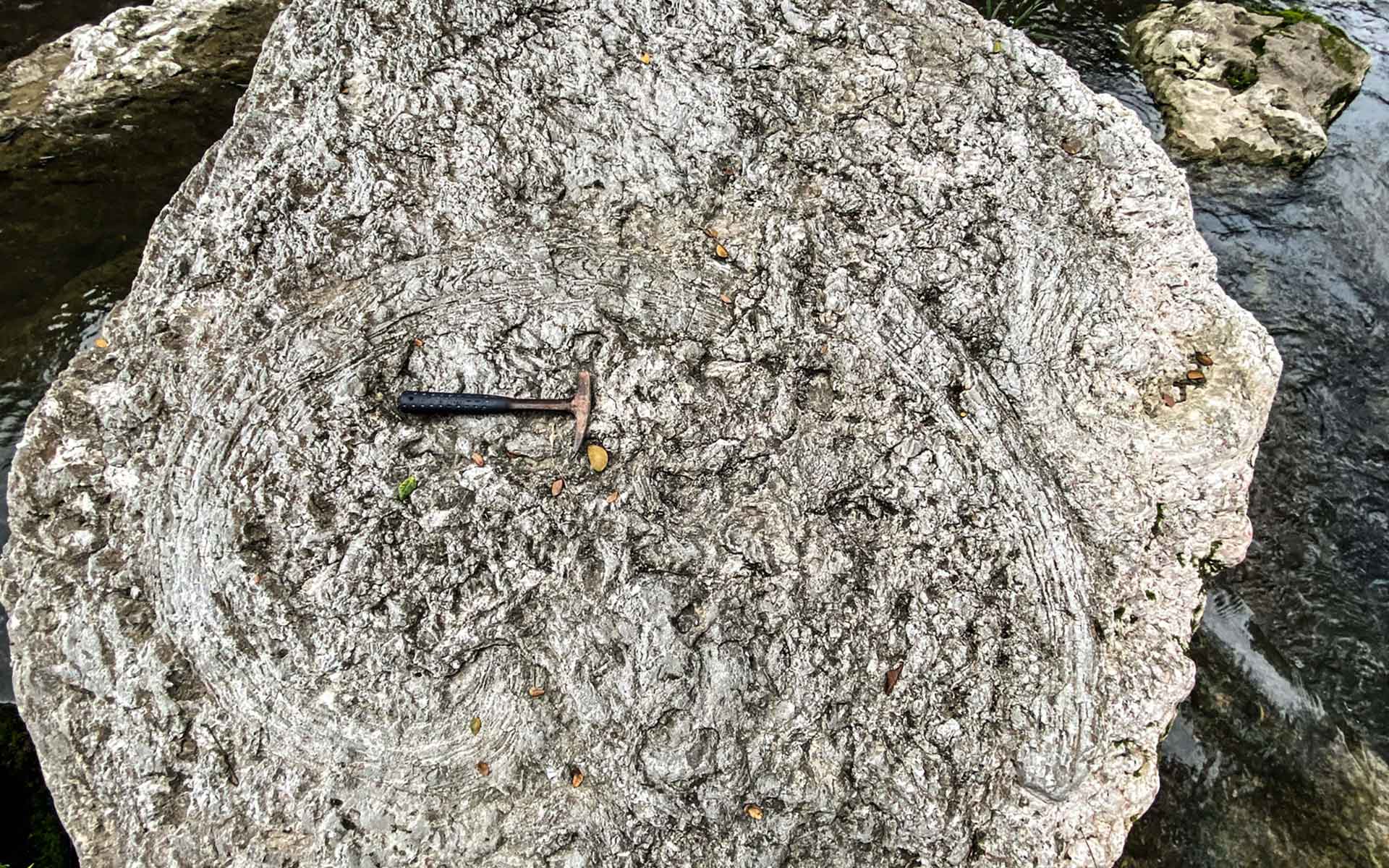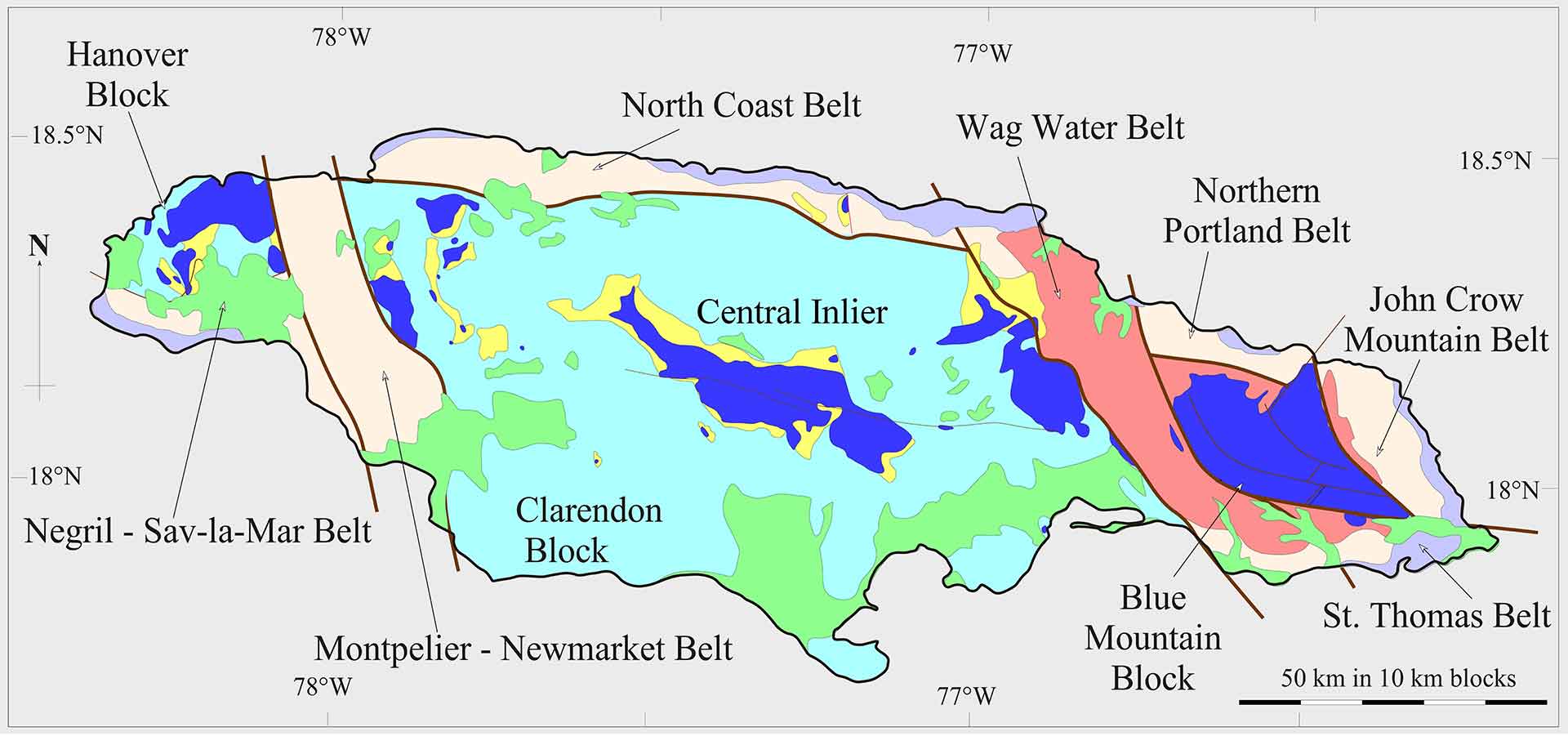
The barrel-shaped rudist bivalve Macgilavryia nicholasi in growth position (lower) and as toppled specimens in the Guinea Corn Formation of the Rio Minho.
Geological Period
Cretaceous / Late Maastrichtian
Main geological interest
Paleontology
Stratigraphy and sedimentology
Location
Rio Minho, parish of Clarendon, central Jamaica.
18°09’18.0″N, 77°23’12.0″W
The barrel-shaped rudist bivalve Macgilavryia nicholasi in growth position (lower) and as toppled specimens in the Guinea Corn Formation of the Rio Minho.
The most diverse and thickest limestone succession with abundant rudist bivalves within the Caribbean faunal province.
Different assemblages of rudist bivalves developed in the Americas and the Tethys (Mediterranean, western Asia, and northern Africa) during the Late Cretaceous. The best studied and most diverse assemblages of late Maastrichtian rudists in the Americas is in Jamaica, specially those from Rio Minho. The rudists of Rio Minho have been extensively studied in terms of their taxonomy, their palaeoecolocy and their sedimentology. The different assemblages indicate that different rudists were adapted to different microenvironments across the carbonate platform in terms of their size, their growth morphology and their substrate preferences.
- Geological description
The 200-m thick Guinea Corn Formation forms the marine portion of a 1,000 m thick transgressive-regressive tectonic cycle (Kellits Synthem). The complete Guinea Corn succession is exposed in the bed and banks of the Rio Minho, and the alternations of limestone, shale, mudstone, and sandstone, form small-scale cycles, which can be correlated from section to section along the river. Rudist bivalves occur throughout the limestone and also in some of the shale, with specimens preserved in growth position, toppled, or reworked. A highly diverse assemblage of rudist bivalves is present including at least 34 species belonging to 18 genera. Distinct assemblages are present including: 1, very small radiolitids (Trechmannites); 2, small radiolitids (Parabournonia, Guanacastea and Thyrastylon) and antillocaprinids (Antillocaprinia, Rotacaprina), 3, larger radiolitids (Chiapasella); 4, giant radiolitids (Macgillavryia) and hippruitids (Praebarrettia); and 5, various antillocaprind associations. The barrel-shaped Macgillavryia and Praebarrettia reach sizes of 43 cm and 35 cm high, respectively, whereas the giant Titansoarcolites can reach up to 1.3 m across (making it amongst the largest bivalves that every lived). This high-diversity rudist fauna occurs in uppermost Maastrichtian strata and is restircted to the American biogeoprovince. The bivalve community was likely terminated by the K-Pg extinction event.
- Scientific research and tradition
Rudist bivalves were discovered in northern Clarendon during the first official geological survey of Jamaica (Sawkins, 1969) and subsequently monographed by Whitfield (1897), Chubb (1971), and Mitchell (2013). Their age has been constrained (Steuber et al., 2002) and their sedimentology, palaeoecology and depositional environment have been investigated (Mitchell, 2002).
- Reference
Chubb, L.J. (1971) ‘Rudists of Jamaica’, Palaeontographica Americana, VII(45), pp. 161–257.
Mitchell, S.F. (2002) ‘Palaeoecology of corals and rudists in mixed volcaniclastic–carbonate small-scale rhythms (Upper Cretaceous, Jamaica)’, Palaeogeography, Palaeoclimatology, Palaeoecology, 186(3), pp. 237–259. Available at: https://doi.org/10.1016/S0031-0182(02)00505-9.
Mitchell, S.F. (2013) ‘Revision of the Antillocaprinidae Mac Gillavry (Hippuritida, Bivalvia) and their position within the Caprinoidea d’Orbigny’, Geobios, 46(5), pp. 423–446. Available at: https://doi.org/10.1016/j.geobios.2013.07.003.
Sawkins, J.G. (1869) Reports on the Geology of Jamaica; Or, Part II. of the West Indian Survey. London: Longmans, Green and Co. (Memoirs of the Geological Survey).
Steuber, T. et al. (2002) ‘Catastrophic extinction of Caribbean rudist bivalves at the Cretaceous-Tertiary boundary’, Geology, 30(11), pp. 999–1002. Available at: https://doi.org/10.1130/0091-7613(2002)030<0999:CEOCRB>2.0.CO;2.
Whitfield, R.P. (1897) ‘Descriptions of species of Rudistae from the Cretaceous rocks of Jamaica, West Indies, collected and presented by Mr. F.C. Nicholas.’, Bulletin of the American Museum of Natural History, 9, pp. 185–196.
- Author(s)
Simon F. Mitchell
University of the West Indies, Mona, Kingston, Jamaica
Sherene James-Williamson
University of the West Indies, Mona, Kingston, Jamaica


